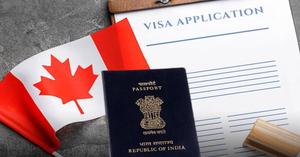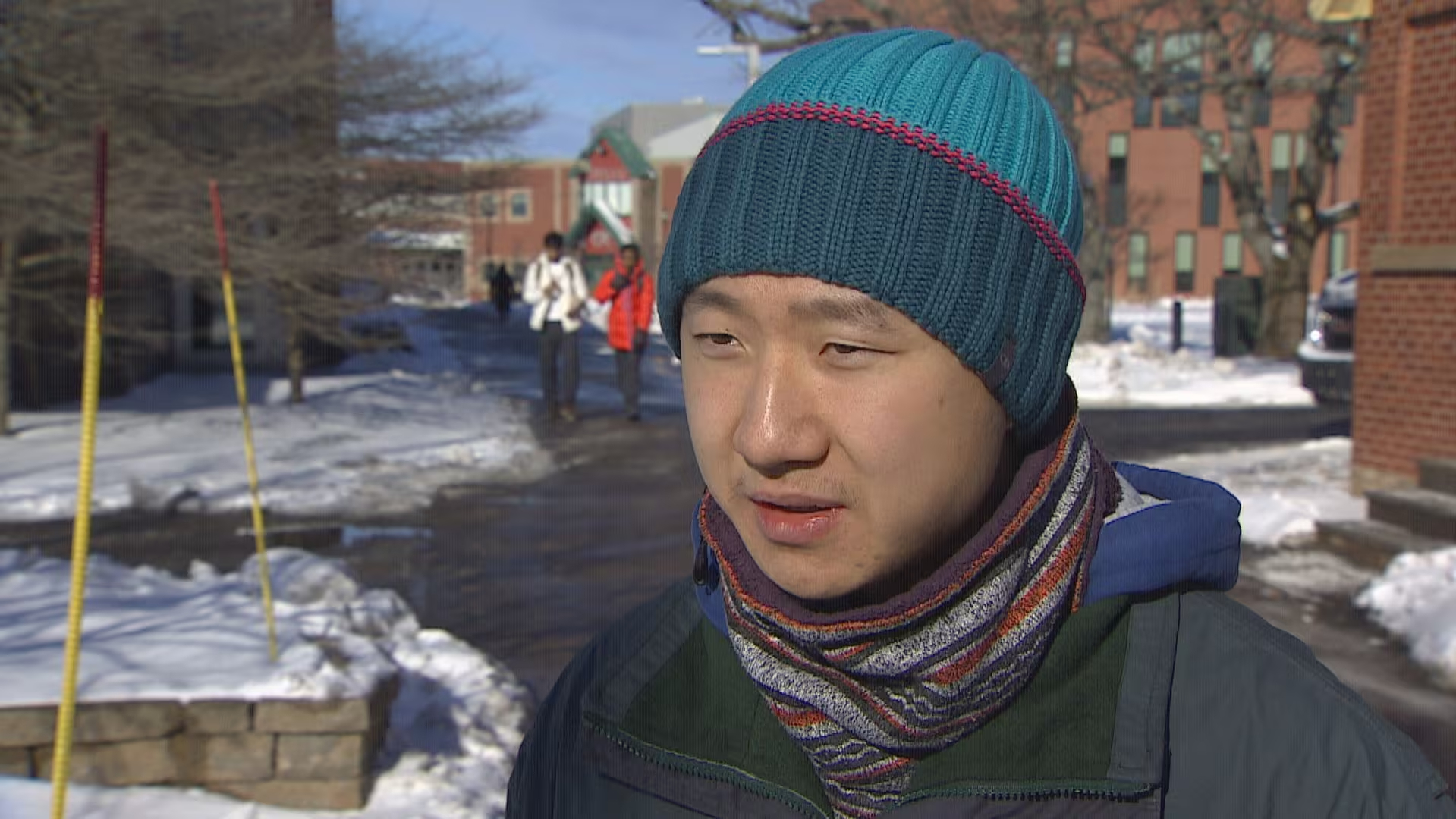Canada has seen a surge of study permits issued, a key part of its population growth strategy. Immigration, Refugees and Citizenship Canada (IRRC) data shows study permits, a.k.a. student visas, surged higher in Q2 2023. The surge isn’t just about population growth, but is also a part of a plan to help maintain its waning global influence. However, when combined with one of the biggest housing bubbles in the world, it may backfire and have the opposite effect.
Canada Issued 35% More International Student Permits
Canada’s population boom got a big boost from a sharp uptick of international students. Study permits jumped 64% to 149,700 in Q2 2023—a 35% increase from last year. Quarterly growth tends to not catch much attention, since student permits are seasonal. At nearly double the rate seen since 2019, which averaged between 24% and 33%, it’s worth noting the jump.
Annual growth for the quarter was astronomically large, but in line with data over the past few years. It’s the persistent compounding of said large numbers that really highlights the growth. Over the past five years, study permits have nearly doubled (+188%) for the second quarter.
Canada Is Issuing A Lot More Student Permits
Study permits issued in Canada in the second quarter of each year.
| Year | Study Permits |
|---|---|
| 2015 | 34,445 |
| 2016 | 55,680 |
| 2017 | 52,420 |
| 2018 | 83,785 |
| 2019 | 83,180 |
| 2020 | 63,510 |
| 2021 | 84,900 |
| 2022 | 110,840 |
| 2023 | 149,675 |
Source: IRCC; Better Dwelling.
Source: IRCC; Better Dwelling.
Canada Is On Track To Issue 665k Study Permits This Year
Canada’s rapid growth for student visas has it on track to smash previous goals. Year-to-date issuance grew 21.1% to hit 240,900 new study permits as of Q2. At this rate, the country is on target to hit a whopping 665,000 visas by year-end. It’s about 115k more than last year, and it’s a lot of people for a relatively small country.
Nearly 1 In 48 People In Canada Are International Students
Visiting students now represent a significant share of the country’s population. Valid study permits grew 30% to hit 807,300 people in 2022. Officially, the government has stated they see this number rising to 900,000 people this year. At the current growth rate, it’s more likely to be within spitting distance of 1 million. A lot of large numbers are hard to picture without context, so let’s give them some.
Nearly 1 In 48 People In Canada Are On A Student Visa
The total number of unique people that held a study permit in Canada at year end.
| Year | Unique Study Permit Holders |
|---|---|
| 2000 | 122,665 |
| 2001 | 145,950 |
| 2002 | 158,125 |
| 2003 | 164,480 |
| 2004 | 168,590 |
| 2005 | 170,440 |
| 2006 | 172,340 |
| 2007 | 179,110 |
| 2008 | 184,140 |
| 2009 | 204,005 |
| 2010 | 225,295 |
| 2011 | 248,470 |
| 2012 | 274,700 |
| 2013 | 301,545 |
| 2014 | 330,105 |
| 2015 | 352,325 |
| 2016 | 410,560 |
| 2017 | 490,760 |
| 2018 | 566,950 |
| 2019 | 637,855 |
| 2020 | 527,365 |
| 2021 | 617,250 |
| 2022 | 807,260 |
Source: IRCC; Better Dwelling.
Just how many people are on study permits? At the end of 2022, about 1 in 48 people in Canada were international students. On a per capita basis, the composition is nearly 4x greater than the ratio in the US. Higher if you consider that Canada doesn’t require a permit for some programs the US does.
A couple more fun notes to keep in mind. Canada’s schools are concentrated around a handful of economic regions. This means the concentration of international students is much higher in some areas. Also, the US is pursuing rapid student visa growth, and Canada’s growth rate is 3x higher.
Canada Is Using Study Permit Growth As A Diplomatic Tool
Canada has always maintained robust student permit growth, as the chart below shows. Since the Great Recession, double digit annual growth (or just shy) has been normal. A few global events are the only hiccups where the rate falls, going all the way back to the early 2000s. Generally, Canada has always been a place that embraces international students.
Canada Has Never Seen Student Permit Growth This High
The annual growth rate of the total number of study permits held in Canada.
| Year | Percent |
|---|---|
| 2001 | 19 |
| 2002 | 8.3 |
| 2003 | 4 |
| 2004 | 2.5 |
| 2005 | 1.1 |
| 2006 | 1.1 |
| 2007 | 3.9 |
| 2008 | 2.8 |
| 2009 | 10.8 |
| 2010 | 10.4 |
| 2011 | 10.3 |
| 2012 | 10.6 |
| 2013 | 9.8 |
| 2014 | 9.5 |
| 2015 | 6.7 |
| 2016 | 16.5 |
| 2017 | 19.5 |
| 2018 | 15.5 |
| 2019 | 12.5 |
| 2020 | -17.3 |
| 2021 | 17 |
| 2022 | 30.8 |
Source: IRCC; Better Dwelling.
Growth surges once the country starts using the students as diplomatic tools. In 2016, a sudden surge is a part of Canada’s strategy to forge closer ties with China. China was the largest source of study permit holders, until it peaks and reverses course in 2018. It’s not clear why, but that’s the year of the Canada-China rift over the detention of Huawei CFO Meng Wanzhou. China’s more strict capital controls, and Canada’s non-resident home buyer taxes didn’t help.
Canada’s Source of International Students Is Quickly Shifting
The top three source countries for study permit holders in Canada.
| Year | China (PRC) | India | Philippines |
|---|---|---|---|
| 2000 | 12,205 | 2,210 | 375 |
| 2001 | 21,990 | 3,005 | 460 |
| 2002 | 31,250 | 4,520 | 525 |
| 2003 | 37,410 | 6,210 | 585 |
| 2004 | 39,920 | 6,705 | 510 |
| 2005 | 39,990 | 7,155 | 540 |
| 2006 | 39,950 | 7,455 | 525 |
| 2007 | 41,090 | 7,910 | 710 |
| 2008 | 43,090 | 8,270 | 870 |
| 2009 | 50,430 | 11,660 | 1,140 |
| 2010 | 57,310 | 20,245 | 1,120 |
| 2011 | 68,300 | 27,290 | 1,330 |
| 2012 | 80,875 | 32,150 | 1,630 |
| 2013 | 94,140 | 34,620 | 1,995 |
| 2014 | 107,810 | 38,420 | 1,810 |
| 2015 | 117,835 | 48,755 | 1,980 |
| 2016 | 131,050 | 76,070 | 3,325 |
| 2017 | 139,520 | 123,110 | 3,925 |
| 2018 | 141,720 | 171,505 | 5,025 |
| 2019 | 140,550 | 218,540 | 7,730 |
| 2020 | 116,215 | 179,510 | 7,225 |
| 2021 | 104,550 | 216,500 | 15,295 |
| 2022 | 100,010 | 319,000 | 32,425 |
Source: IRCC; Better Dwelling.
Despite the tensions, growth surged higher. It was a part of the $148m International Education Policy (2019-2024)—a plan that was designed to help stem Canada’s waning global influence. The strategy focuses on exporting curriculums, and growing the international student population. Note the drop in permits to students from China, and the surge in India and the Philippines. Not only did it make up for the decline, but it appears to be a regional strategy as well.
“If they choose to immigrate to Canada, they contribute to Canada’s economic success. Those who choose to return to their countries become life-long ambassadors for Canada and for Canadian values.”
— MP James Gordon, Minister of International Trade Diversification, Building on Success: International Education Strategy (2019-2024).
Not a bad strategy from a global influence standpoint, for those looking for that kind of thing. In addition, the family of a study permit holder likely has a favorable view of the country their kids move to. However, it works both ways—bad experiences export the reality of exploitation.
Canada’s Plan May Backfire, As More Students Feel Exploited
That appears to be the point Canada is approaching. International students are warning about housing conditions; viral Canadian immigration YouTubers, that spent years selling people on the benefits, now tell students to move to Canada if you’re “ready to work two jobs.” There’s countless examples, but you get the point.
International students are realizing they’re just a part of some exploitative plan. They were sold on a Canada that doesn’t exist anymore, and in the age of social media—they aren’t just telling their friends, they’re revealing it to the world. Great since it helps others avoid the issue, but at the same time it can lead Canada down an irreversible path. Once the immigrant friendly reputation that was developed over decades disappears, it’s going to be a long road to prove it was just a handful of policymakers, not how a whole country feels.
Most complaints are focused on the cost of living, with housing being the biggest issue. It was a predictable issue, the population has been targeted for growth much faster than the ability to produce housing. Policymakers say we just need to make more housing, and faster. It’s not clear if they’re lying or unaware that involves outbidding the rest of the world for materials to build housing, thus sending home prices even higher. Maybe Ottawa needs fewer lawyers and more people that specialize in math?
Canada has recently stated it will consider a cap on international students. However, it may be saving face at this point. The largest sources of international students are projected to see much higher economic growth… for a very, very long time. It’s not hard to oversell in the short-term, but it gets harder the longer a misleading pitch is made. Especially when domestic young adults, supposedly starting with an “advantage,” are considerably worse off than previous generations.
Link: https://betterdwelling.com/canadas-student-visa-strategy-takes-off-nearly-1-in-48-people-on-a-study-permit/





